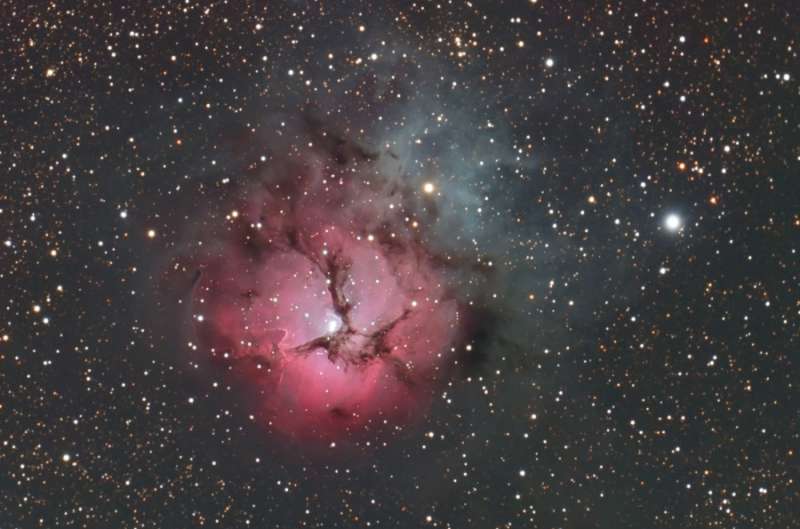
|
Credit & Copyright: Ed Henry
Explanation:
The beautiful
Trifid Nebula
is a colorful study in cosmic contrasts.
Also known as M20, it lies about
5,000
light-years away toward the
nebula rich
constellation Sagittarius.
A star forming region in the plane of our galaxy,
the Trifid illustrates three different types of
astronomical nebulae;
red emission nebulae dominated by
light emitted by hydrogen atoms,
blue reflection nebulae produced
by dust reflecting starlight, and
dark nebulae where
dense dust clouds appear in silhouette.
The bright red emission region, roughly separated into three
parts by obscuring, dark dust lanes, lends the Trifid its popular name.
In this gorgeous
wide view, the red emission is also juxtaposed with
the telltale blue haze of reflection nebulae.
Pillars and jets sculpted by
newborn stars, left of the emission nebula's center, appear
in Hubble Space Telescope close-up images
of the region.
The Trifid Nebula is about 40 light-years across.
|
January February March April May June July August September October November December |
| ||||||||||||||||||||||||||||||||||||||||||||||||
NASA Web Site Statements, Warnings, and Disclaimers
NASA Official: Jay Norris. Specific rights apply.
A service of: LHEA at NASA / GSFC
& Michigan Tech. U.
Based on Astronomy Picture
Of the Day
Publications with keywords: M 20 - Trifid nebula
Publications with words: M 20 - Trifid nebula
See also:
